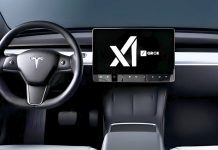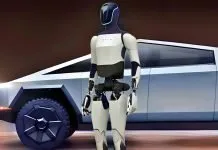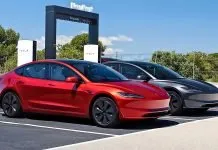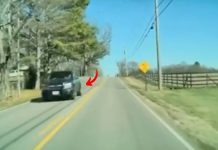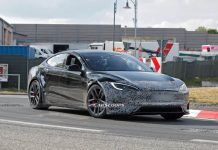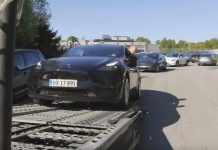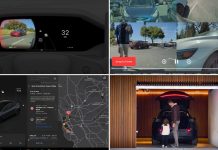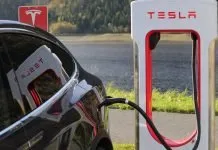A video from Taiwan shows a disturbing accident in which a Tesla crashes into an overturned truck. It seems like the vehicle rammed straight into the top of a toppled large truck that was on its side, spanning to two lanes of the freeway. The driver confirms that the vehicle had its Autopilot mode switched on. As the car was in Autopilot mode, the driver was not paying much attention on the road, so the driver could not hit the brakes on time. Good thing was that the traffic was less and visibility was good so nobody was injured.
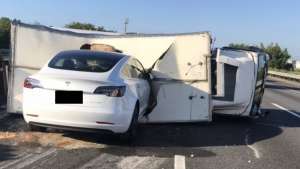
Why did Tesla Model 3 Crash Directly Into Overturned Truck
The CCTV footage has recorded the accident from several angles. Analyzing the video there are multiple questions arising:
- Why does Tesla autopilot fail to perceive such a large obstacle on the freeway even with its combined use of radars and cameras?
- Why does Tesla emergency braking system failed to brake for the truck driver standing in the lane attempting to direct cars away from hitting his truck? At the last moment, he jumped away and saved himself from being hit by the car.
- Would LIDAR/maps have prevented this collision?
- How much attention was the Tesla driver paying to the road, and what bearing does that possess?
- Was the Driver’s claim true that the Autopilot was on?
Tesla’s Autopilot is meant to assist the driver and not to completely chauffer them and it constantly demands the driver’s attention on the road at all times, putting the driver responsible for accidents. Drivers are required to wiggle the steering control from time to time inputting that they are keeping hands on it, but their gaze is missed from being tracked in some cars. Probably the driver could not have been paying much attention so he didn’t see the toppled truck as a huge obstacle on an empty road, though he managed to press the brakes at the last moment before the impact. This analysis is evident that is was the driver’s fault, so far. Although, Tesla claims that they have almost achieved real full-self driving, but the system responsible for this is nowhere close to being geared up for that.
This malfunction of the Autopilot to perceive is so conspicuous that it puts doubt in minds whether the Autopilot was on or not. Tesla stayed silent on that. However, it is very much probable that the driver was not at all attentive as the car drove straight in the lane heading for the crash, concluding that Autopilot was on. In addition, Tesla’s “Automatic Emergency Braking” and collision warning systems in most scenarios never off unless they are disabled manually.
Another reason can be with the radar. Generally, the radar in the Tesla is capable of receiving strong reflections off this truck. It is to be noted that the roof is not metal, though. However, these radars would receive information suggesting that the truck is a stationary object in the middle of the road. Radar resolution can’t always differentiate an object in the median of the road from another object in the left lane. The path of the road is a curve to the right at that point, showing median objects straight up ahead the path of the lane, this misinterpretation could have lead the car to not to brake when detecting those.
Possible Reasons Behind Tesla Model 3 Crash
Missing a pedestrian
The debate continues whether the autopilot was enabled or disabled. One argument in support of the autopilot being disabled is that the vision system is well trained to identify pedestrians being efficient enough to almost never miss them. But because pedestrians are not anticipated on freeways, the chance of them being hit by the vehicle fairly increases, but still they should be detected by the car’s diagnostic system. And there is supposed to be a specific radar from pedestrians, but because he was not moving on the road he might have gone undetected.
Tesla’s AEB system is probably never off so it is expected to have reacted to that pedestrian otherwise it should have reacted and alerted the driver, and the brakes would have been hit sooner.
LIDAR
Elon Musk is not a fan of LiDAR technology, Tesla doesn’t have LiDAR and relies on radar, GPS, maps and other cameras and sensors. LIDAR can detect the truck very clearly and trigger braking to operate sooner.
Maps possibly clearly indicate the radar profile of that section of road. They could have indicated the vehicle to expect radar returns from the median, it would have known their nature. With stronger radar returns from a big truck it could have been detected easily as it extended over 2 lanes. Inputs from the Maps can reveal the curve ahead putting radar targets in the median straight ahead, as well as reporting the exact distance to these targets which would have been much further than the distance to the truck or the truck driver.
It is unsolved how a large flat surface and the large body of metal was not able to provide sufficient radar signature to trigger Tesla’s radar system.
Also, consider theories mentioned by Wes Bard
Driver Attention
Tesla’s instructions say that the driver’s attention is demanded on the road. Some cars are well equipped to prevent that by monitoring the gaze of the driver, and alerting when the driver looks away from the road for too long. Tesla however discarded this approach. They mean to set a good safety record for Autopilot as evidence this is not necessary.
Final Words
Being a driver assist system, Tesla Autopilot is not meant to catch everything on the road, and so if the driver diverts his attention, there are chances of such accidents. But this is well unacceptable that a giant truck and a pedestrian could not be detected by such an advanced system which also serves as the foundation of a purported “full self-driving” system. Such events reduce confidence in such a system. It is yet to be confirmed whether Tesla had Tesla’s new hardware able to run the more advanced autopilots to which Tesla decided to stay silent.

